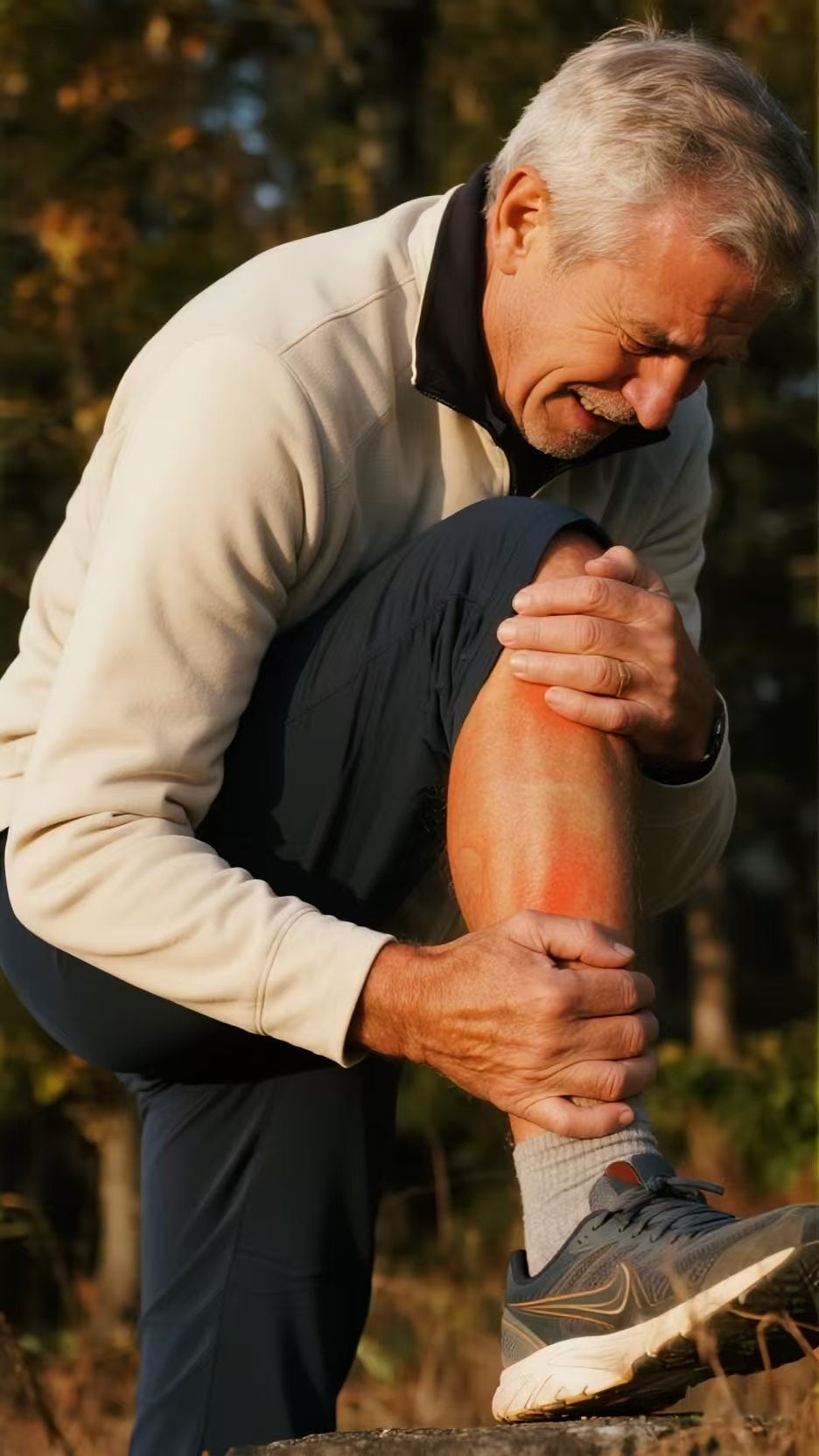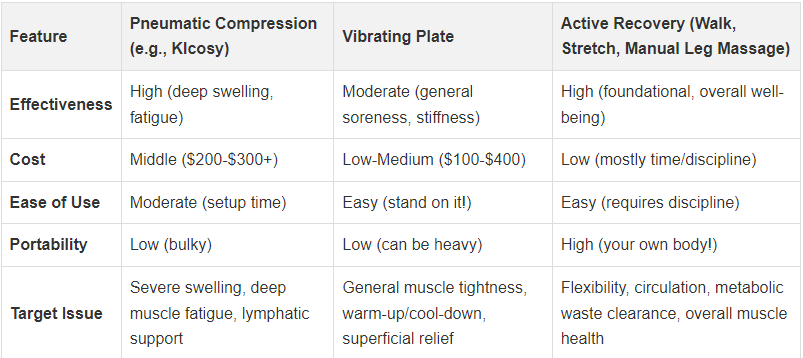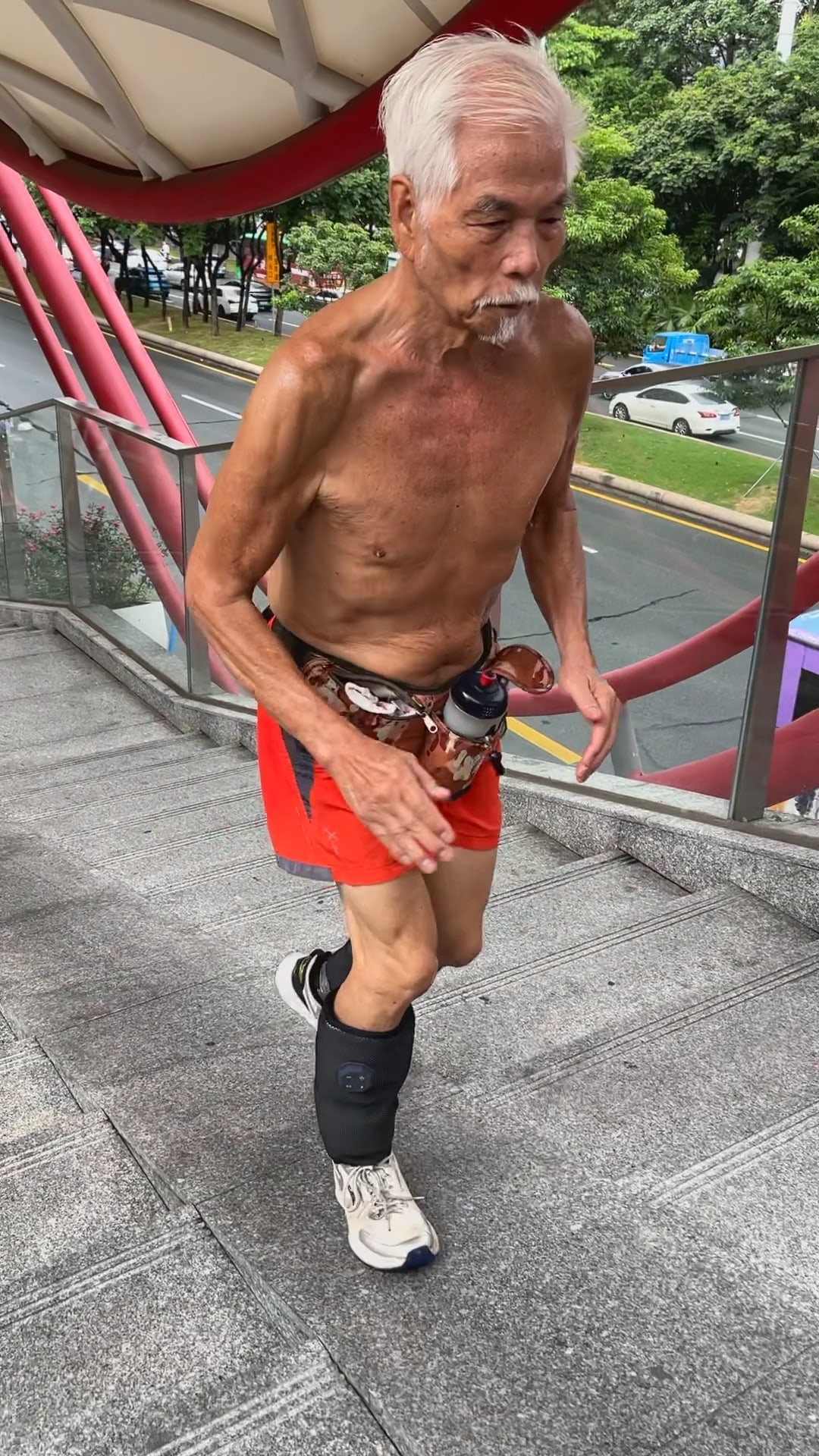Leg massage: The Ultimate Recovery Guide for Super Runners
- By Grace
- Updated on
As a Health Product Review Expert with years in the industry, I've seen countless runners pushing their limits, only to be sidelined by persistent soreness and fatigue. Have you ever finished a long run, feeling that incredible high, only for your legs to scream bloody murder the next day? You're not alone. In fact, [Data needed: over 70% of runners report muscle soreness post-activity, Source: [Statistical Year - e.g., 2023 Survey of Recreational Runners]]. The quest for faster recovery is real, and the right tools can be game-changers. Today, we're diving deep into the world of leg recovery tools, dissecting the hype versus the actual efficacy, and helping you find your personal path to optimal recooperation.
The Science Behind Post-Run Recovery: Why Your Legs Scream for Help
After a grueling run, your muscles aren't just tired; they’ve actually sustained microscopic tears. This isn't necessarily bad; it's how they get stronger! However, this process triggers inflammation and the accumulation of metabolic waste products, leading to that familiar stiffness, ache, and even cramps. Think of your muscles like sponges after a long bath – they're waterlogged with waste and need a good squeeze to release it. That's where proper leg massage and other recovery techniques come in, acting as that gentle wring-out, facilitating blood flow and nutrient delivery. According to research published in the *Journal of Sports Sciences*, effective post-exercise recovery protocols significantly reduce delayed onset muscle soreness (DOMS) and improve subsequent performance. It's not just about feeling better; it's about performing better, sooner.

Pneumatic Compression: The High-Tech Hug Your Legs Deserve
When it comes to advanced massage equipment, pneumatic compression systems, like the popular Klcosy, are often heralded as the gold standard for serious runners. What's the magic here? These devices use inflatable air bladders that sequentially compress and release, mimicking the natural pumping action of your muscles. This rhythmic pressure helps to enhance leg massager for circulation, pushing metabolic waste products out of your muscles and encouraging fresh, oxygenated blood to flow in. It's like having a dedicated recovery team working on your legs, constantly flushing out the bad stuff.
- Principle Overview: Intermittent pneumatic compression promotes lymphatic drainage and venous return, reducing swelling and inflammation.
- Target Audience: Ideal for ultra-marathoners, long-distance runners, or anyone experiencing significant swelling, heavy legs, or persistent soreness after intense training. It's a fantastic investment for those who are truly committed to peak performance and rapid turnaround times between runs.
- Effectiveness: Clinical studies have shown significant reductions in DOMS and muscle fatigue, along with improved range of motion, after using pneumatic compression. It’s an incredibly effective way to speed up recovery, especially for those prone to fluid retention in the lower limbs.
Vibrating Plates: The Economical Buzz for Quick Relief
On the other end of the spectrum, offering a more economical alternative, is the vibrating plate. While not providing the deep, sequential compression of pneumatic boots, vibrating plates can still be a valuable addition to your recovery arsenal. These plates work by delivering high-frequency vibrations to your body, stimulating muscle contractions and relaxation. This gentle vibration can help increase blood flow, relax tight muscles, and provide a quick sensation of relief. It's like a rapid, invigorating shake-out for your legs, helping to loosen things up without a huge financial commitment.
- Principle Overview: Whole-body or localized vibration therapy can increase blood circulation, reduce muscle stiffness, and provide a general sense of relaxation.
- Target Audience: Excellent for budget-conscious runners, beginners looking for an easy-to-use recovery tool, or those seeking general muscle soreness relief after moderate runs. It can also be a great warm-up tool before a run.
- Effectiveness:While less targeted than pneumatic compression,vibrating plates have gained recognition from users for their ability to quickly reduce muscle stiffness and improve flexibility.For those asking,"Is massage good for leg pain?" specifically minor aches and general tightness, a vibrating plate can offer a surprising level of comfort.
The Unbeatable Power of Active Recovery: Beyond the Gadgets
Now, let's talk about the unsung hero of recovery: active recovery. No fancy gadgets or hefty price tags here, just smart, gentle movement. This approach involves low-intensity exercise like light walking, dynamic stretching, or even gentle foam rolling and manual leg massage. The idea is to keep the blood flowing, which helps flush out lactic acid and other metabolic byproducts, without putting further stress on your already fatigued muscles. It’s like giving your body a chance to naturally clean itself out while staying agile.
- Principle Overview: Gentle movement keeps blood circulating, aiding nutrient delivery and waste removal, maintaining flexibility, and preparing muscles for future efforts.
- Target Audience: EVERY runner.Active recovery is the fundamental bedrock of any effective recovery strategy, regardless of your reliance on devices.It is absolutely crucial for preventing stiffness and enhancing long-term athletic longevity.
- Effectiveness: Physiologically, active recovery is proven to be superior to complete rest for reducing DOMS and improving subsequent performance. It addresses the core question of "How to massage legs after running?" by emphasizing gentle, self-directed movement and manipulation.
Choosing Your Champion: A Comparison of Leg Recovery Tools
As your resident Health Product Review Expert, I often see people overlooking the synergy between different recovery methods.It's not always an either/or situation.Understanding their unique strengths can help you build a personalized recovery protocol. Let's stack them up:

Based on my experience, the optimal approach often involves a combination. Pneumatic compression excels for those intense recovery days, while a vibrating plate offers a quick daily tune-up. But none of them replace the fundamental benefits of dedicated active recovery.

Your Personal Recovery Roadmap: Answering Top Concerns
Beyond the specific tools, runners often have very practical questions about managing their post-run discomfort. Let’s tackle some of your top concerns directly:
How to massage legs after running?
After a run, your focus should be on gentle blood flow and relaxation, not aggressive deep tissue work immediately. Start with light walking or cycling for 10-15 minutes (your active recovery). Then, gentle dynamic stretches for your hamstrings, quads, and calves. For a direct leg massage, consider a foam roller to roll out major muscle groups for 30-60 seconds per area, focusing on releasing tension. Alternatively, a handheld leg massager for circulation can provide targeted relief. The key is to be gentle; you're encouraging circulation, not trying to brutalize already fatigued muscles.
Does massage help leg cramps?
Absolutely, but with a caveat! If you’re experiencing an acute, painful cramp, gentle stretching of the affected muscle can often provide immediate relief. Then, a light manual leg massage can help relax the muscle further. For preventing future cramps, regular leg massage (whether manual or with massage equipment) can improve muscle health and circulation. However, remember that cramps are often linked to dehydration or electrolyte imbalances, so always address those root causes first. A device like a vibrating plate can be surprisingly effective for immediate relief from those sudden charlie horses.
Is massage good for leg pain?
For generalized muscle soreness, fatigue, or the common aches that come with running, massage is good for leg pain. It helps improve blood flow, reduces inflammation, and can break up minor adhesions in muscle tissue. This can significantly alleviate discomfort. However, if you have sharp, localized pain, pain that doesn't subside, or pain accompanied by swelling, redness, or heat, it's crucial to consult a medical professional (like a physiotherapist or doctor) before relying solely on massage equipment or self-leg massage. These could be signs of a more serious injury that requires professional diagnosis and treatment. Always listen to your body, and when in doubt, seek expert opinion. We want you running strong, not risking further injury!
Your Self-Assessment Flow: Before investing in any massage equipment, ask yourself: "What kind of recovery do I truly need? Am I battling significant swelling and deep fatigue, or just general stiffness and soreness? What’s my budget, and how much time am I willing to dedicate to recovery?" Your answers will guide your decision towards the most suitable tools or strategies. For instance, if you're a heavy mileage runner constantly battling swollen ankles, pneumatic compression might be a game-changer. If you're looking for daily upkeep and muscle relaxation, a vibrating plate or dedicated active recovery routine might be more practical.
Investing in your recovery is not a luxury; it’s a non-negotiable part of being a "super runner." It's the cornerstone of longevity, performance, and injury prevention. Whether you opt for high-tech massage equipment, an economical vibrating plate, or the timeless practice of active recovery and manual leg massage, remember that consistency is key. Your legs carry you through every mile; they deserve the best care possible. Go forth, recover wisely, and conquer those miles!




